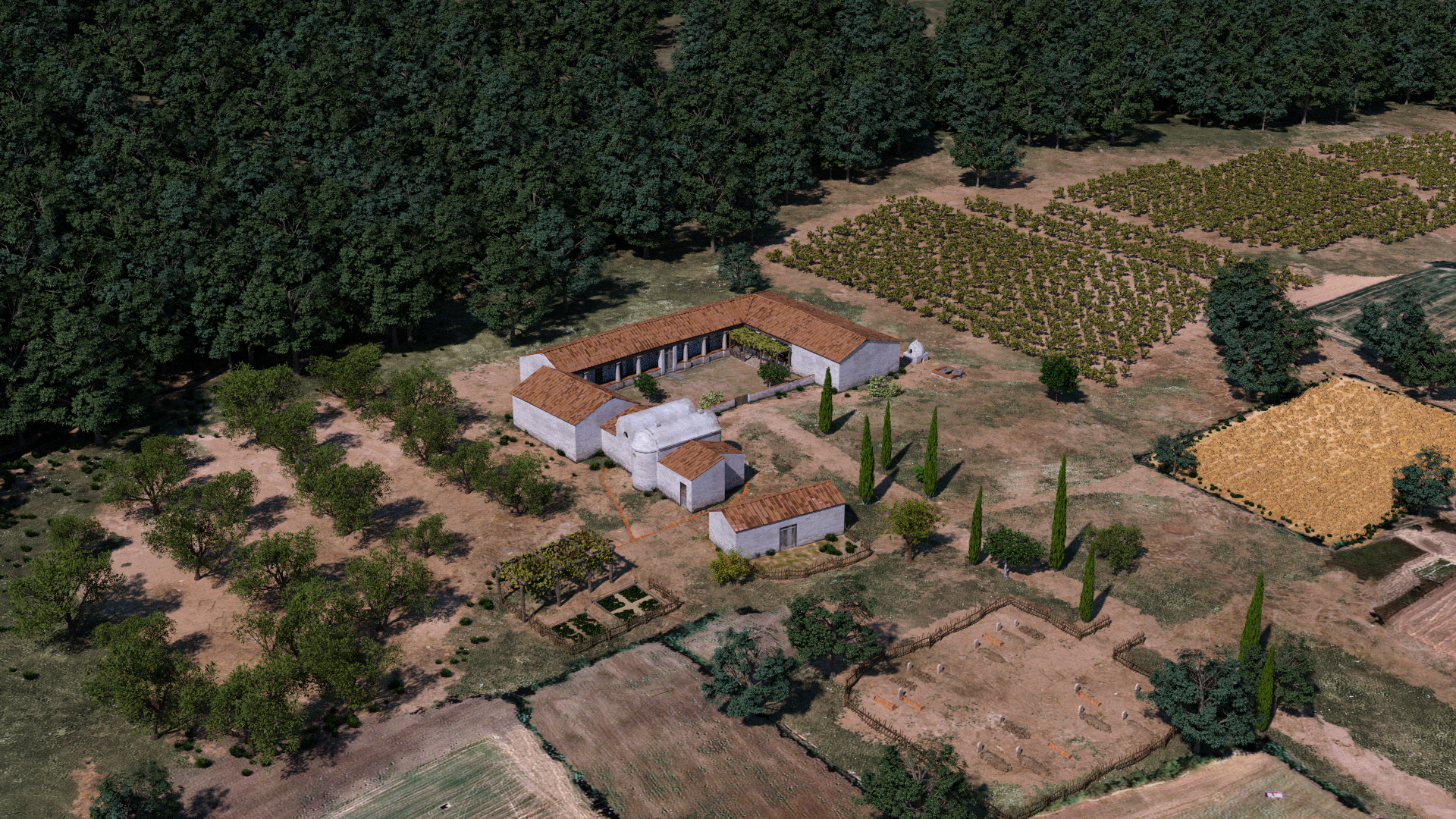
Archaeology in the city and territory of Tusculum (Italy). From archaic times to the present day
Since 1994, the Escuela Española de Historia y Arqueología en Roma (EEHAR-CSIC) leads the archaeological research project focused on the now-abandoned city of Tusculum, devoted to the rediscovery and study of this important ancient settlement, founded over the archaic period and situated 30 km south-east of Rome. This project is the main institutional one and it is currently one of the longest archaeological research frame of a foreign institution in Italy.
The Tusculum-project has made it possible to improve the knowledge on the evolution of this city from its foundation times until the medieval period along with the understanding of its surrounding territory over this long temporal parenthesis. This scientific excellence feature is based on a multidisplinary approach that combines historical and archaeological research together with aerial, geophysic and topographic surveys, bioarchaeology, geology, epigraphy and numismatic exams, among others. These methodologies and studies have been developed by different specialists, based at several national and international institutions, always under the leadership of the EEHAR-CSIC. Studies and specialists that altogether have enabled to obtain an innovative image of this historical site, which has become thereby an outstanding case study very well known both in Italy and Spain.
Over the last years, Tusculum has also become a relevant site for training of undergraduate and doctoral students, who have enjoyed the chance of improving their corresponding expertise by taking part of this project. Thanks to the participation at different international training programs and collaborations both with Spanish and Italian universities, Tusculum is thus always open to those who want to know archaeology and history within international and interdisciplinary environments.
The main outputs have been so far presented at different national and international meetings and published at high-impact and peer-reviewed journals and monographies, the last three of them specifically focused on the epigraphy, the Roman theater and the so called archaic fountain. All of them authorized by those mentioned interdisciplinary teams.
Finally, all these results have had a direct impact on the conservation and restoration of the site. Regarding this aspect, it is worthy to remember that the EEHAR-CSIC is responsible for the scientific advice on the creation of the Tusculum archaeological park by designing the touristic routes, providing the contents and 2D and 3d graphic modellings and helping at communication plans. This way, the site has become fully accessible to visitors and is linked with the local communities, helping thus to reinforce the sense of identity of the latter and promoting heritage enhancement.

Period
From protohistoric times to its abandonment in medieval times
Institution
Spanish School of History and Archaeology in Rome-CSIC
Web and social networks
https://tusculum.eehar.csic.es/
https://eehar.csic.es
https://www.tuscolo.org/
https://www.parcocastelliromani.it/
Principal Investigators
Dr. Antonio Pizzo
Spanish School of History and Archaeology in Rome-CSIC
Location
Tusculum, Rome, Italy
UBICACIÓN
RESULTS
In 1994, when EEHAR started its research project, a large part of the city was still buried and the few monumental buildings that had been excavated in the first half of the 19th century were isolated and disconnected from each other. The main objective of the Tusculum Project in these years has been the analysis and reconstruction of the evolution of the monumental area of the city. Today, after twenty-five excavation campaigns, we have managed to reconstruct with a good degree of detail the formal and typological characteristics of the city throughout its long history. Gradually, the original and overall image of the ancient city has been recovered. Thanks to a long process of analysis, reorganization and cross-reading of all the information acquired over the years (archaeological, topographical, architectural, decorative, etc.), a series of phase plans has been drawn up, ranging from the archaic period to the 3rd century A.D. This is a particularly important result, considering that, prior to the Spanish excavations, Tusculum from the archaic, republican and late imperial periods was practically only known through historical sources.
Likewise, the medieval phase of the site was completely unnoticed, not only because of the radical destruction of the city at the end of the 12th century, but also because of the lack of interest of the first archaeologists who intervened in the area, who only documented the remains of the Roman period.
Another fundamental result that has been achieved is the change in the perception of the city itself, in its extension and complexity. In these years, EEHAR has been dedicated to consolidate and protect the archaeological remains brought to light during the archaeological campaigns, getting involved in the process of enhancement of the site and dissemination of heritage in collaboration with local authorities. In addition, since 2002, it has been involved in the design and realization of the Tuscolo Archaeological Park and participates in the “Sistema Museale territoriale Museum Grand Tour” as a member of the steering committee.
FOTOS
VIDEOS
- A Lunula with Geometric Decoration Found in Portugal Could Reveal the Structure of the Celtic Calendar (La Brújula Verde 28/02/2025) - 4 March, 2025
- Neolithic monument resembling Woodhenge uncovered in Denmark (Heritage Daily 26/02/2025) - 3 March, 2025
- When did people start building houses with corners? (New Scientist 25/02/2025) - 3 March, 2025























